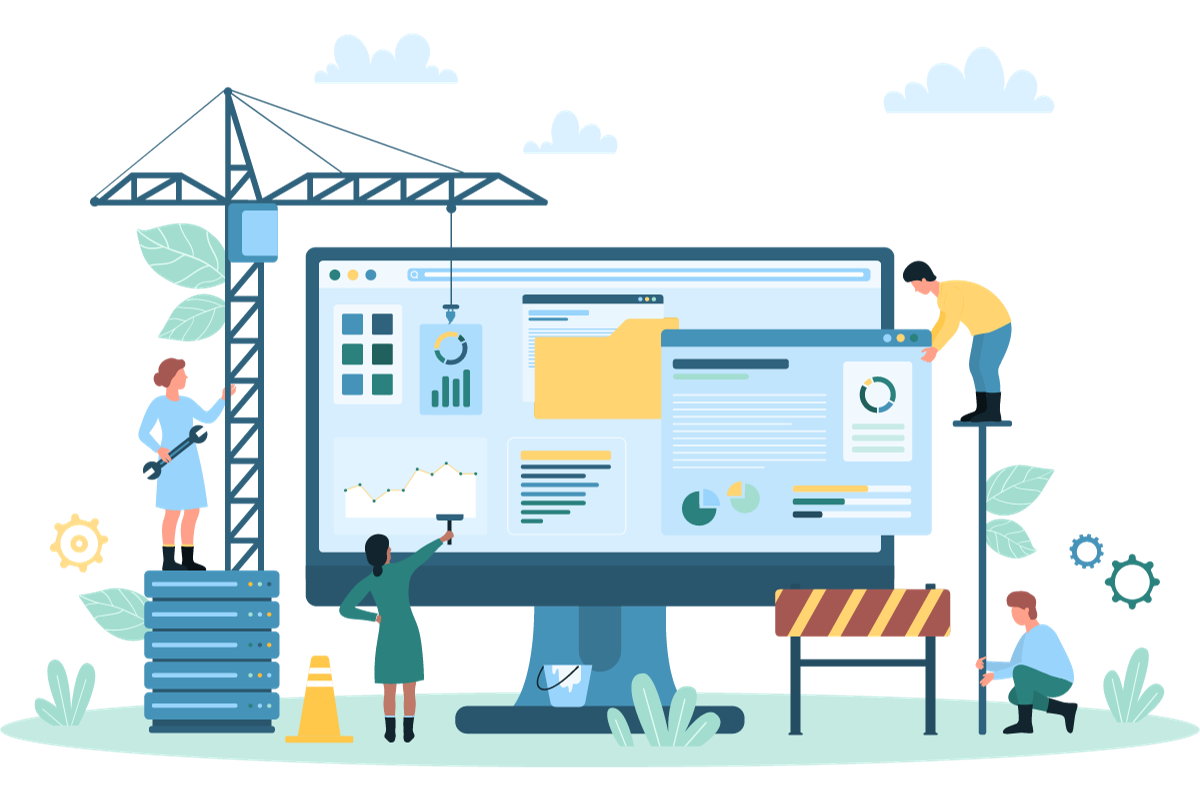In today’s fast-paced digital world, having a strong online presence is crucial for businesses and individuals alike.
A well-designed website not only showcases products and services but also establishes credibility and fosters customer trust.
However, creating a website from scratch can be a daunting and time-consuming task, especially for those without coding experience.
This is where website builders like Hocoos come to the rescue. Website builders are user-friendly tools that enable anyone to design and build a professional-looking website without the need for coding knowledge.
Let’s explore the various ways website builders can save a significant amount of time compared to traditional coding methods.
Table of Contents
ToggleUnderstanding Website Builders
Website builders are online platforms or software that provide a user-friendly interface for creating websites. They offer a wide range of features and functionalities to help users build websites efficiently.

One of the main advantages of website builders is their simplicity. Users can easily navigate through the platform, select a template, and begin customizing their website in a matter of minutes.
In contrast, coding a website from scratch involves writing code for each element, which can be time-consuming, especially for beginners.
How Website Builders Work
Website builders simplify the website creation process by offering intuitive drag-and-drop functionality. With a few clicks, users can add and arrange elements like text, images, videos, and forms on the page.
This eliminates the need to write code manually, making it accessible to individuals with little to no coding experience.
On the other hand, coding a website requires a deep understanding of programming languages like HTML, CSS, and JavaScript, which takes a considerable amount of time and effort to learn and implement.
Saving Time With Website Builders
Instant Setup and User-Friendly Interface: Website builders offer pre-designed templates that are ready to use, catering to different industries and website purposes.
Users can select a template that suits their needs and preferences and start customizing it immediately.
In contrast, coding a website from scratch involves setting up the basic structure, designing layouts, and styling elements, which can take several hours or even days to accomplish.
Drag-and-Drop Functionality
The drag-and-drop feature allows users to place elements on the website simply by dragging them to the desired location.
This visual approach eliminates the need to manually position elements using code, saving valuable time during the design process.
In coding, precise element positioning requires writing code for margins, paddings, and alignments, which can be time-consuming, especially for intricate layouts.
Pre-designed Templates and Themes
Website builders offer a vast library of professionally designed templates and themes. Users can choose a template that aligns with their brand identity or website purpose and then customize it accordingly.
This not only reduces the design phase but also ensures a polished and cohesive look for the website.
Conversely, coding a website design from scratch involves creating every element and style manually, which can lead to inconsistencies and take considerable time to achieve the desired aesthetics.

Responsive Design
Responsive design is essential for modern websites to ensure optimal user experience across various devices, including desktops, smartphones, and tablets.
Website builders automatically implement responsive design principles, adjusting the website’s layout and elements based on the screen size.
In contrast, coding responsive design involves writing complex media queries and testing on multiple devices, which can be time-consuming and prone to errors.
Flexibility and Customization
Customizing Elements
Website builders offer a high degree of flexibility when it comes to customizing elements.
Users can easily change colors, fonts, images, and other visual elements to match their brand identity or personal preferences.
This level of customization ensures that each website built with a website builder is unique and tailored to the specific needs of the user.
Conversely, coding customization involves modifying individual code snippets, which requires in-depth coding knowledge and is time-intensive.
Integrating Third-Party Tools
Many website builders come with built-in integrations for third-party tools and services such as e-commerce platforms, analytics tools, and social media widgets.
Integrating these tools is usually a straightforward process, as the website builder provides dedicated plugins or integration options.
On the other hand, integrating third-party tools through coding requires writing custom code and ensuring compatibility, which can be time-consuming and challenging for non-technical users.
Collaboration and Real-Time Updates
Collaboration Features
Website builders with collaboration features allow multiple users to work on a project simultaneously.
This is especially useful for teams or businesses with multiple stakeholders involved in the website creation process.
Collaborating in real-time streamlines the development process, as team members can work on different sections of the website simultaneously, reducing overall development time.
In contrast, collaborating on coding projects can be complicated, as multiple developers need to merge their code changes, potentially leading to conflicts and delays.
Instant Updates
With website builders, changes and updates to the website can be made in real-time. Users can see the changes instantly without needing to wait for a developer to implement them.

This immediate feedback loop accelerates the website’s development and refinement process, as users can quickly iterate and fine-tune their design without any coding delays.
In traditional coding, even minor updates can require significant testing and deployment efforts, leading to longer turnaround times.
Conclusion
In conclusion, website builders are powerful tools that can save a significant amount of time compared to traditional coding methods.
Their user-friendly interfaces, drag-and-drop functionality, pre-designed templates, and other features make website creation accessible to everyone, regardless of their technical expertise.
Additionally, the flexibility, customization options, and collaboration features further enhance their efficiency.
Embracing website builders is a wise choice for individuals and businesses looking to establish a strong online presence without the time and complexity of coding from scratch.
FAQs
Are Website Builders Suitable For All Types Of Websites?
Yes, website builders cater to various industries and purposes, making them suitable for personal blogs, business websites, e-commerce stores, portfolios, and more.
Do Website Builders Require Technical Expertise?
No, website builders are designed to be user-friendly, and no coding or technical expertise is necessary to use them effectively.
Can I Switch Templates After Starting With A Website Builder?
Yes, most website builders allow users to switch templates without losing their content, making it easy to change the website’s design later on.
Do Website Builders Offer SEO Features?
Yes, many website builders come with built-in SEO tools and guides to help users optimize their websites for search engines.











